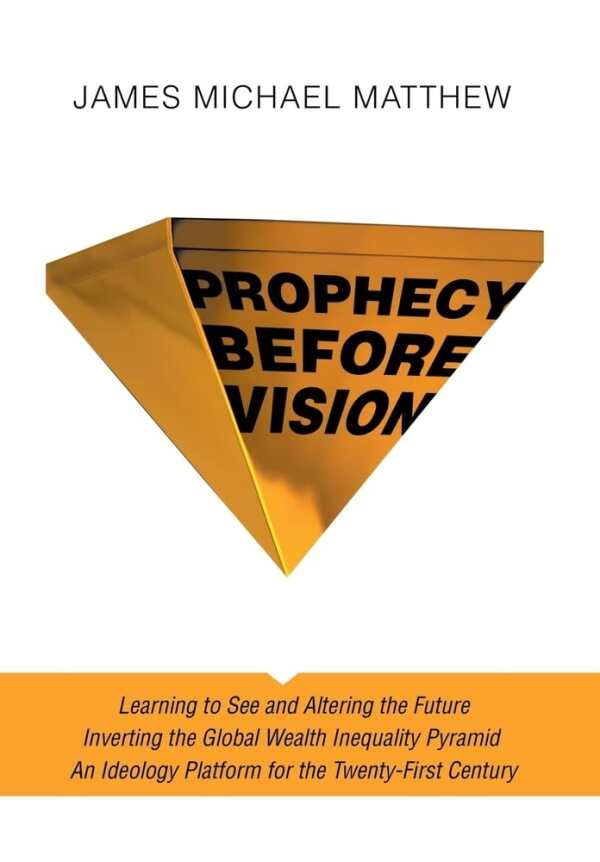Prophecy before Vision
Learning to See and Altering the Future; Inverting the Global Wealth Inequality Pyramid; An Ideology Platform for the Twenty-First Century
Prophecy before Vision is an innovative social science text that fosters hope for a more just, inclusive society.
Financial executive James Michael Matthew’s ambitious social science book Prophecy before Vision takes on the problem of wealth inequality with innovative strategies.
Here, “prophecy” means the ability to foresee future forces and events, and “vision” references the responses to those possibilities, made in consideration of people’s needs and demographics. Both concepts are applied to the book’s proposals for inverting the “wealth inequality pyramid,” which is explained in logical, succinct terms.
Matthew’s perspectives on the twenty-first century’s most pressing problems are centered throughout. He decries wealth inequality as a “global Armageddon” and works to show why top-down attempts at reform are doomed to fail. The book makes efforts to subvert popular paradigms, too, such as those that regard poor people as a drain on society; here, those at the bottom of the pyramid are reframed as target markets. It says that great, in-demand businesses can be supported by workers who are often dismissed as “average” or “below average,” but who want a chance at a better life. The book also encourages providing marginalized people with assistance, training, and opportunities at each step along the way.
The book even redefines leadership, calling true leaders those who are invested in “helping others succeed.” Also shared is the perspective that generosity is “the new currency.” Though still rooted in capitalism, Matthew’s prospective business world is one that excludes no one and that values customers in terms of their potential. The book supports its claims that targeting those who need help can have a transformative effect with examples from Matthew’s own work.
Surprising facts arise throughout. The book notes that China’s debt exceeds 250 percent of its GDP, and that the total cost of crime in the US equals 10 percent of its GDP. It calls both realities frightening indicators of creeping problems and intones that massive changes in people’s mindsets and values will be required to implement its responsive suggestions. Still, its strategies are clear and measured.
Though it proposes tackling problems as diverse and looming as crime, mental illness, and housing challenges, the book is hopeful. It makes a convincing case that the current methods for addressing such issues are outdated, and that real change will require real shifts. Case studies are present to complement its proposals, as are probing questions that invite individual innovation. Flow charts and graphics are used to clarify the book’s complex concepts, and a list of references is included for further research.
Prophecy before Vision is an innovative social science text that suggests solutions to lasting social and economic problems.
Reviewed by
Kristine Morris
Disclosure: This article is not an endorsement, but a review. The publisher of this book provided free copies of the book and paid a small fee to have their book reviewed by a professional reviewer. Foreword Reviews and Clarion Reviews make no guarantee that the publisher will receive a positive review. Foreword Magazine, Inc. is disclosing this in accordance with the Federal Trade Commission’s 16 CFR, Part 255.

